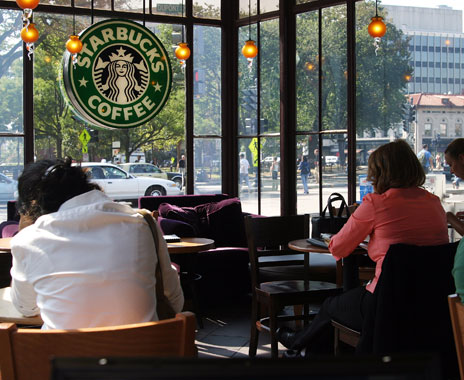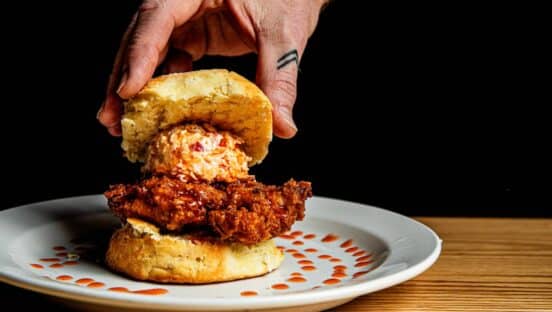The most recent numbers on baseline performance of fast casuals suggest some deep-seated problems in the industry. This year, US fast-casual sales growth will slow to between 6 and 7 percent from about 8 percent in 2016, and down from 10 and 11 percent in each of the prior five years (Pentallect Inc.). Fast casual was one of the weakest segments for sales growth based on the second quarter results of 2017 (Black Box). Potbelly is shuttering its largest-volume store, Noodle & Co is foundering, Chipotle is still in damage control mode. Has the fast casual dream been eclipsed by better fast food, cheaper groceries, and cook-it-yourself meal kits?
Millennials eat out five times a week. They want brands that they can trust, connect to on a personal level, and access with smart phone apps. With a little internal renovation, fast casual chains can capitalize on these truths. Quick-serves need to situate themselves at the intersection of more engaged (thus more loyal) employees and innovative technology to recapture the hearts and tastebuds of younglings who are drifting elsewhere.
Here are the first three steps toward a fast casual utopia.
Digitize your store
Fast casual restaurants have been sluggish in offering online delivery and app-based ordering and engagement. 2017 is no time for luddites—delay in embracing tech trends has allowed fast food to make gains while fast casual lags behind. Fast casual chains should aggressively implement digital technologies into their stores with an eye to experimentation. Today’s customers are more wedded to a brand if they can engage with it on their phones, and the same goes for employees.
There are some exciting models out there. Panera has introduced an app called “Panera 2.0” that aims to reduce wait times, improve order accuracy, and create a more personalized experience. The company’s fourth quarter revenue climbed 5 percent, shares gained year-over-year by 16 percent, and digital sales now account for 24 percent of total sales. In the third quarter of the same year, Domino’s launched a “zero-clicks” pizza ordering app, boosting revenue by 16.9 percent year-over-year.
These measures bring the food closer to the customer while offering a medium for discounts, special promotion, and customer loyalty programs that drive repeat business. New methods of ordering food also have logistical implications: shorter wait times, more efficient kitchens, and, by extension, an all-around improved dining experience.
For the first time in history, an unsuspecting customer can butt-dial a meat-lover’s pizza right to their door. What a time to be alive.
Reinvent your company culture
The same millennials who are patronizing fast casual restaurant are staffing them, so companies should align the values they project onto their customers with those they invest in their staff. Let’s not forget: rising hourly turnover is a crucial driving factor behind the restaurant industry’s doldrums, and employees are the crucial determinant in a restaurant’s success. In the words of Wallace Doolin, chairman and co-founder of TDn2K, “At every level we see retention of talent, adequate staffing and engaged employees predicting top or bottom quartile performance (in table or counter service brands).”
We know that millennials are soul-searchers, who yearn to contribute to a larger good through their work. Fast casual chains should engineer their values to mesh with the politics of the people they wish to attract and retain, which might include sustainability, ethical sourcing, and social mobility. Starbucks demonstrated its enthusiasm for the potential of its loyal employees by allowing them to gain a debt-free online degree through ASU. Chilis overhauled its culture through a purpose-driven philosophy based on Gallup’s Five Essential Elements of Wellbeing, which it clearly communicated in a server handbook.
In other words, companies’ investment in their frontline employees is not self-evident; it must be proven through collaborative initiatives that treat employees as socially conscious humans.
Equip your employees with the tools they need to succeed
Fast casual restaurants should set the stage for the employee performance they expect by providing tools to succeed. In the digital age, companies have a plethora of means to make their employees’ labor more efficient and more rewarding.
Restaurants which offer apps to their customers create new opportunities for employee-customer engagement. For example, Sweetgreen’s app garners behavioral data about where its customers eat and what they order. The company founders envision a future where they can relay that information to servers, allowing servers to anticipate customer’s desires, bond over shared tastes, and collaborate on new custom salads.
Fast casual restaurants should consider going cashless to improve convenience and security while boosting the rate of transactions per hour. Adding kiosk ordering to some locations, as Wow Bao has, lessens the margin of employee error and eases the stress of long lines.
One of the most commonly reported reasons for employees’ leaving a company is insufficient recognition. Store leaders can remedy this deficit through employee engagement platforms which make instant recognition, as well as communication, easy and self-reinforcing. Further, friendly competition allows teams to cohere around fixed goals, making for contagious motivation.
The bottom line is fast casual restaurants have access to a near limitless stream of data, but their use of it is stuck in the dark ages. Shrewd implementation of technology and employee investment might just precipitate a renaissance.




